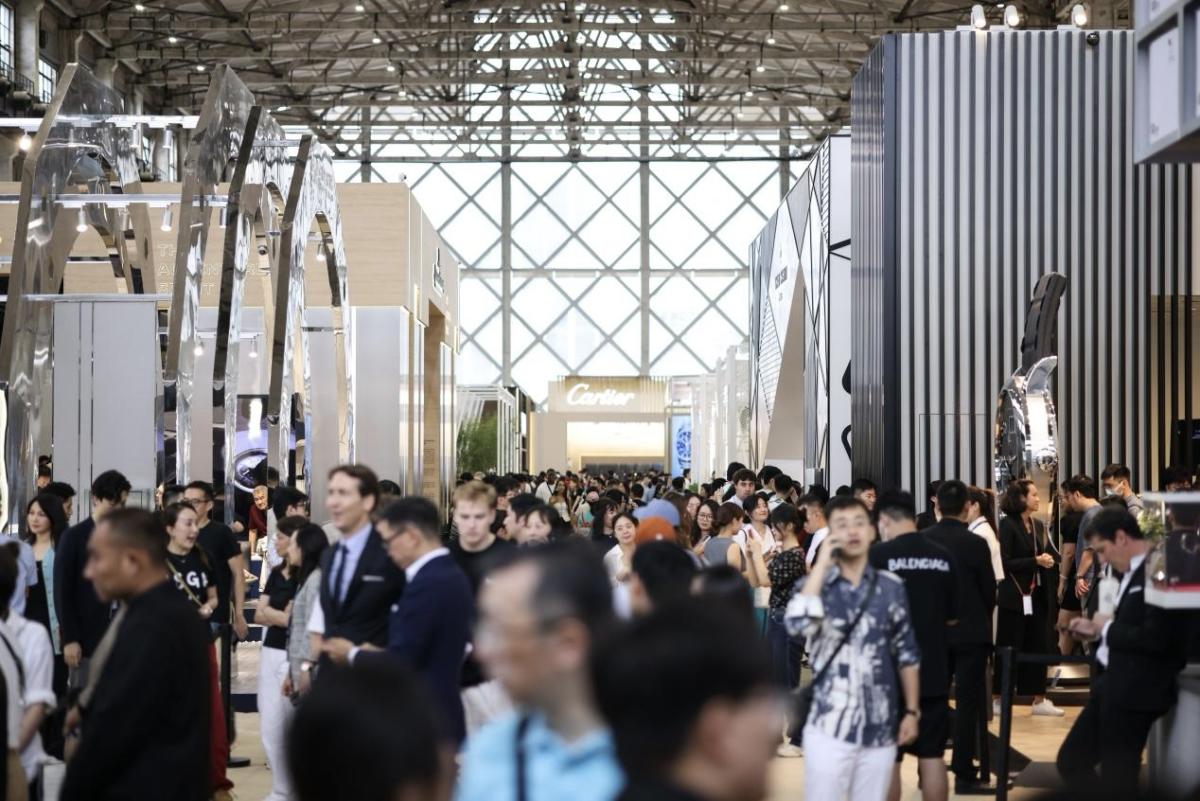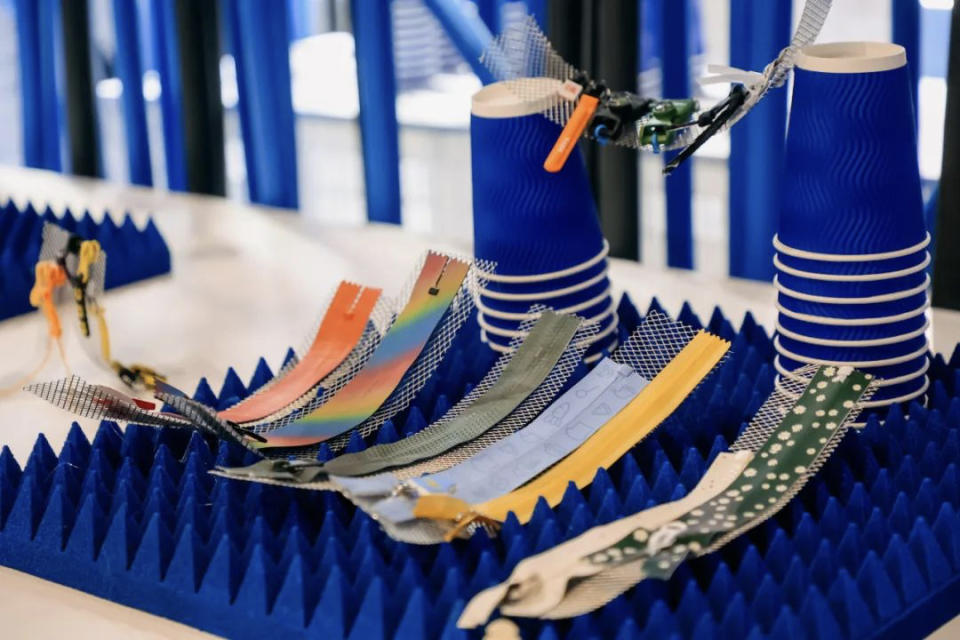Fashion
China Insight: Thriving Fashion Exhibitions Could Boost the Future Development of the Chinese Market

The meetings, incentives, conferences and exhibitions, or MICE, economy is seeing a robust rebound in China this year.
From Shanghai to Shenzhen, and even in second-tier cities like Dalian, Ningbo, Haining and Zhuzhou, fashion exhibitions are spreading throughout China. Those taking part include international luxury brands; a range of supply chain companies for apparel, footwear and accessories, and numerous industrial clusters. The exhibits encompass jewelry, watches, trendy fabrics, fur fashion, and new woolen products across various niches and specialized fields.
More from WWD
Data from the National Bureau of Statistics of China shows that in July, the growth rate of social financing slowed down, the decline in the M1 money supply widened to 6.6 percent, total retail sales of consumer goods grew by 2.7 percent year-on-year, with the growth rate increasing by 0.7 percentage points compared to the previous month, and the value added by industry above a designated size increased by 5.1 percent, with the growth rate falling by 0.2 percentage points compared to the previous month.
The latest data makes clear that the overall growth of China’s economy has “slowed down and improved in quality,” which is in line with the judgment of the situation at the Political Bureau meeting on July 30: “Domestic effective demand is insufficient, the economic operation is divergent, the hidden risks in key areas are still relatively high, and there are temporary difficulties in the transformation from the old growth drivers to the new ones.”
From the public’s perspective, a series of record-breaking “new lows” continues to emerge in areas such as consumption, employment and lending. However, at the macro level, financial policies that “squeeze out the water” indeed significantly favor the “real economy.”
In the next phase, as huge amounts of credit flows into the manufacturing sector, the market is bound to face the problem of capacity digestion — how to achieve a balance between supply and demand through various strategies and measures. In short, the current fundamentals of the Chinese market remain unchanged: a weak real estate sector, more goods being produced than consumed, and external demand being stronger than internal demand.
Against this backdrop, and in stark contrast to the bleak data, a succession of fashion shows held across China in August to some extent is helping to spearhead the fashion industry’s growth in the second half.
“Hardship” and “intense competition” have become bywords throughout the industry. At present, with the undeniable trend of declining consumption and a slowing economy, local governments and garment associations are working together to set the stage for a variety of fashion shows, which in August popped up in a variety of places.


In Zhejiang, following the China (Yuyao) International Fur Fashion Exhibition that showcased the industrial chain of fur products, from raw materials to finished pieces and opened in Ningbo on Aug. 8, the 2024 Haining China-International Home Textiles (Autumn) Expo was held in Haining three days later.
In Shenzhen, from Aug. 12 to 15, the Link Fashion garment exhibition attracted global visitors. Dalang, which aims to become the world’s capital of woolen fashion, presented an overall image of an industrial base that has been transformed through foreign trade.
In Shanghai, from Aug. 27 to 29, the National Exhibition and Convention Center (Shanghai) hosted Intertextile Shanghai apparel fabrics-China International Trade Fair for Apparel Fabrics and Accessories, CHIC-China International Fashion Fair (Autumn), Yarnexpo and PH Value International Knitting (Autumn/Winter) Expo.
Taking the Intertextile International Pavilion as an example, more than 800 companies from 26 countries and regions participated in the exhibition, including the Italian Milano Unica Pavilion, as well as those from France, Japan and Korea, plus many other countries and regions that brought the latest R&D results. The joint pavilions of Lenzing, Lycra, Hyosung, and Sorona brought cutting-edge technologies and the latest concepts in the industry. Zones for digital solutions, functional fabrics, fine woolens and eight other product categories featured innovations aimed at meeting the industry’s current needs
In Hunan, the Fashion Expo was also officially unveled in late August, scheduled to be held in Zhuzhou, Hunan from Sept. 24 to Oct. 15. The 22-day professional expo will cover 11 themes and be aimed at the central region of China, with the main goal of promoting trade both within and outside the province.
But since textiles and apparel are well-established industries, what kind of signal is being sent by all the trade shows being held this month and scheduled for the months ahead?
Industry insiders believe the strong participation of companies in the recent apparel and textile exhibitions is a reflection of the intense competition in China, with exhibitors using the trade shows to tap into incremental markets, especially international ones.
In 2024, with the market unprecedentedly complex, innovative firms in supply chain technology might have the opportunity to achieve a “bumper harvest” through the exhibitions. This is because products that help companies reduce costs and increase efficiency are in high demand.
During the two sessions of the National People’s Congress earlier this year, “the MICE economy” was an often-used phrase in the work reports of local governments. And on July 28, Premier Li Qiang of the State Council and Prime Minister Giorgia Meloni of Italy signed the “Action Plan for Strengthening the Comprehensive Strategic Partnership (2024-2027)” during a meeting in Beijing. Both sides attach great importance to international exhibitions held in the two countries and will continue to encourage companies from each country to participate.
In China, government work reports from developed regions such as Beijing and Shanghai have proposed promoting the MICE economy to help spark consumer consumption. Guangdong Province, with major exhibitions like the Canton Fair, High-tech Fair, CPTPF, and the Expo Central China, as well as the “Cantonese Business Go Global” series of exhibits, regularly attracts visitors from well-established markets in Europe, America, Japan, and South Korea, and is actively exploring emerging regions such as ASEAN, the Middle East, Africa, Russia, Latin America, and the South Pacific island countries.
In addition to the first-tier cities of Beijing, Shanghai, Guangzhou and Shenzhen, Tianjin has proposed building itself into the northern capital of exhibitions while Dalian aims to become a famous international convention and exhibition city in northeast Asia, and Jiangxi Province has put forward the goal of “one representing exhibition for one city and one representing fair for one industry,” developing new forms and models of consumption, such as instant retail and social e-commerce.
The MICE economy can indeed drive the development of industries such as tourism, lodging, catering, logistics, infrastructure, transportation, construction, commerce and human resources, playing a role in the economic development of cities. However, the greater impact of professional exhibitions still occurs within the industry itself.
Take the “Watches & Wonders” Haute Horlogerie exhibition as an example. After its successful conclusion in Geneva, the exhibition was again held in Shanghai, where it presented a new edition of the Haute Horlogerie event at the Shanghai West Bund Art Center for five days from Aug. 28. Watch enthusiasts, vintage timepiece collectors, and high-net-worth individuals can wander the world of watches while industry experts, a series of activities such as product launches, panel discussions, seminars, basic training courses, product introductions, industry showcases and photography exhibitions help visitors to explore the future development of high-end watchmaking. Moreover, the Shanghai edition has newly set up a LAB Innovation Technology Space, presenting forward-looking inventions and innovations.
This marks the fourth time Shanghai has been the location for the China stop of “Watches & Wonders,” and it joined more than 50 exhibitions in the city this month, with an average of more than 10 a day. Also this month, Shanghai issued the “Several Measures on Enhancing the Driving Effect of the MICE Economy in Shanghai” report, encouraging the introduction of even more exhibitions to build a “City of International Exhibitions” and enhance the impact of the MICE economy.

For the fashion industry, what is particularly anticipated is the third World Design Cities Conference (WDCC) to be held at the end of September, during which the annual Shanghai Gala will again be held, organized by WWD China. This year, with the theme “Together, We Keep Moving Forward,” the conference will invite young Chinese fashion designers, global industry partners and academic experts. Through a series of activities such as exhibitions, fashion shows and forums, the conference will focus on sustainable fashion concepts in contemporary design and explore how Chinese fashion’s creativity will spark future trends.
The MICE economy plays a leading role in supporting both China’s overall macro economy as well as regional ones, serving as a driving force for global development. Professional exhibitions in the fashion industry are especially important engines for promoting the internationalization of the market and driving global trade.
Editor’s Note: China Insight is a monthly column from WWD’s sister publication WWD China looking at developments in that all-important market.
Best of WWD
Sign up for WWD’s Newsletter. For the latest news, follow us on Facebook, Twitter, and Instagram.








